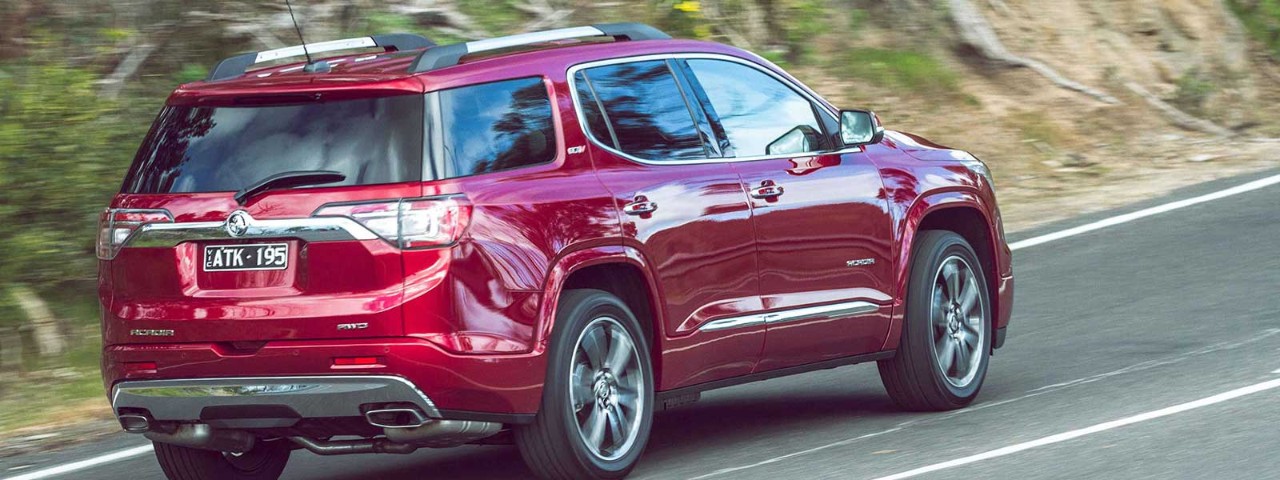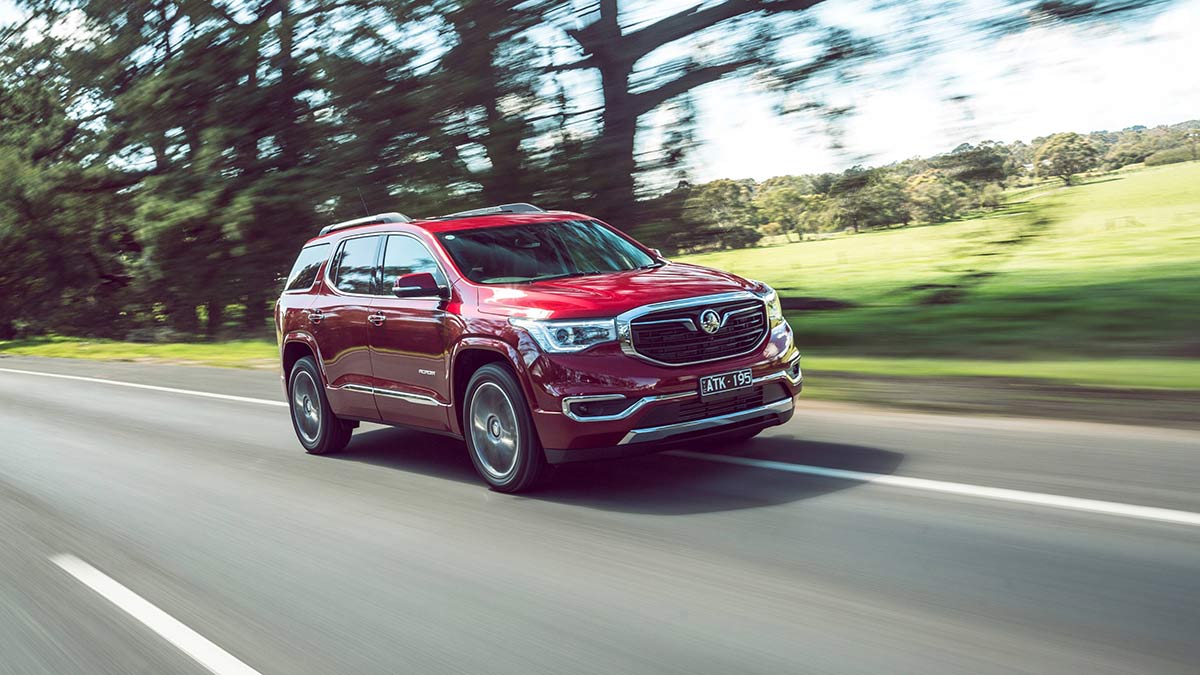The Foton Tunland joins Australia's dual-cab ute market as an affordable mild-hybrid diesel under $50,000, offering strong capability against tough competition.
Holden Acadia 2018 review

RACV tests the 2018 Holden Acadia.
The arrival of the Acadia seven-seat SUV finally gives Holden a competitive offering in the family-focused large SUV market to tackle the likes of Toyota’s Kluger and Mazda’s CX-9. All three are petrol-only SUVs.
After sifting through General Motors’ extensive worldwide stable of vehicles, Holden chose an established US model, the GMC Acadia, and set its local engineers the task to impart more of an Australian character into the vehicle. Extensive work has been performed on the steering and suspension to suit our road conditions and driving preferences.
Thumbs up
A flexible seven-seater that’s quiet, well equipped, and easy to use in the urban environment.
Thumbs down
High fuel consumption depending on use, and steering vagueness on lane keep assist.

The other main focus has been on infotainment and safety technologies. The Acadia features an impressive traffic-sign recognition system that is well tailored to our unique and somewhat diverse road signage. For easier towing there is Hitch Guidance with Hitch View as well as Tow Haul mode for the eight-speed automatic; all are standard across the range.
The Acadia comes in three relatively well-equipped model grades − LT, LTZ and LTZ-V, with each available in two-wheel-drive (2WD) or all-wheel-drive (AWD) format. The line-up kicks off with the 2WD LT, which has a list price of $43,490 plus on-road costs, while the LTZ starts from $53,490 and the LTZ-V is $63,490. Adding AWD capability adds another $4000 in each case.
The cabin presentation has a familiar Holden look that feels more functional than flamboyant. Trimming in the LT has a neat, hard-wearing, family-friendly appearance, while the LTZ adds leather and the LTZ-V takes on a more premium finish. There is enough technology to be appealing, without overwhelming the average driver.
The front seats have enough shaping to provide good support and comfort. In the second row, leg room is abundant − practically limousine-like, in fact − and wide enough to seat three average-sized adults in comfort. While the third-row seats are not quite as spacious and comfortable, they’re still better than in many other seven-seat wagons. The sliding second row means a suitable compromise can easily be found to provide adequate leg room in both rows. There is plenty of versatility in the seat-folding configurations and when all seats are occupied, the amount of luggage space behind the third row is useful, but not massive.
The Acadia receives a maximum five-star ANCAP crash test rating, and is also equipped with a comprehensive suite of safety technologies across the range.
On the road, the Acadia is a strong, well-mannered wagon that’s easy to drive, with reassuring road holding and a comfortably firm, controlled ride. It is a relaxed cruiser, rather than dynamically exciting. The LTZ-V version, which gets a more sophisticated adaptive suspension set-up and bigger wheels, provides the best experience.
Under the bonnet is Holden’s fourth-generation 3.6-litre V6, which is similar to the engine used in the current Commodore, albeit tuned slightly differently to suit the requirements of a large SUV wagon. Producing a useful 231kW of power and 367Nm of torque, it is well supported by a smooth-changing nine-speed automatic which almost goes unnoticed as it always seems to be in the right gear at the right time. This, along with good cabin insulation and active noise-cancelling technology, can disguise the fact that the engine’s maximum power and torque are developed quite high in the rev range.
Official ADR fuel consumption is a respectable 8.9 L/100km for the 2WD version and 9.3 L/100km in the AWD models; but as we have found in the past with vehicles of this size and type, consumption is likely to vary significantly depending on the load and operating conditions.
The optional AWD doesn’t transform the Acadia into a serious off-roading SUV, but it does provide the added security of extra traction on loose or slippery surfaces, such as wet bitumen, dirt roads or even a trip to the snow. The difference in capability was noticeable on the launch drive, when wet conditions were suddenly encountered on winding mountain roads.
The Holden Acadia does not set a new benchmark for the seven-seat SUV category, but it is among the better offerings and its attributes will suit many buyers.
The verdict
The new engine and improved dynamics deliver an involving, enjoyable, class-leading drive.
| Holden Acadia range | |
|---|---|
|
Price |
Model range: $43,490 to $67,490 plus on-road costs. |
|
Drivetrain |
3649cc V6 petrol, nine-speed auto, RWD / optional AWD. Power: 231kW@6600rpm. Torque: 367Nm@5000rpm. Wheels: 18-inch alloy (LT, LTZ), 20-inch alloy (LTZ-V); 18-inch space-saver spare wheel. |
|
Fuel |
8.9 L/100 km (2WD), 9.3 L/100km (AWD) - ADR government test. |
|
Safety |
Five-star ANCAP, autonomous emergency braking, lane-departure warning with lane-keep assist, side blind zone alert, rear cross traffic alert. |
|
Features |
Traffic-sign recognition, tri-zone climate control, satellite navigation, Apple CarPlay/Android Auto. |
|
Warranty |
60 months/unlimited kilometre warranty 12 months/12,000km services |


